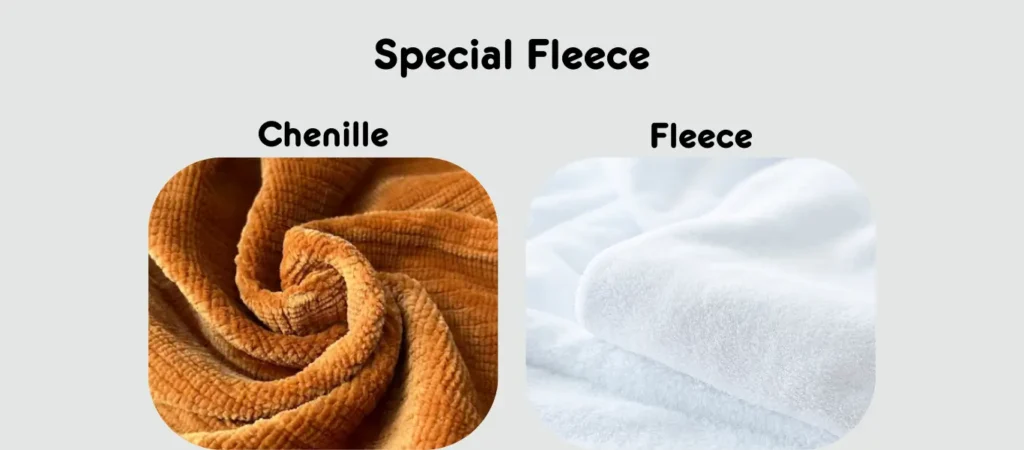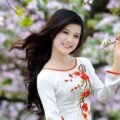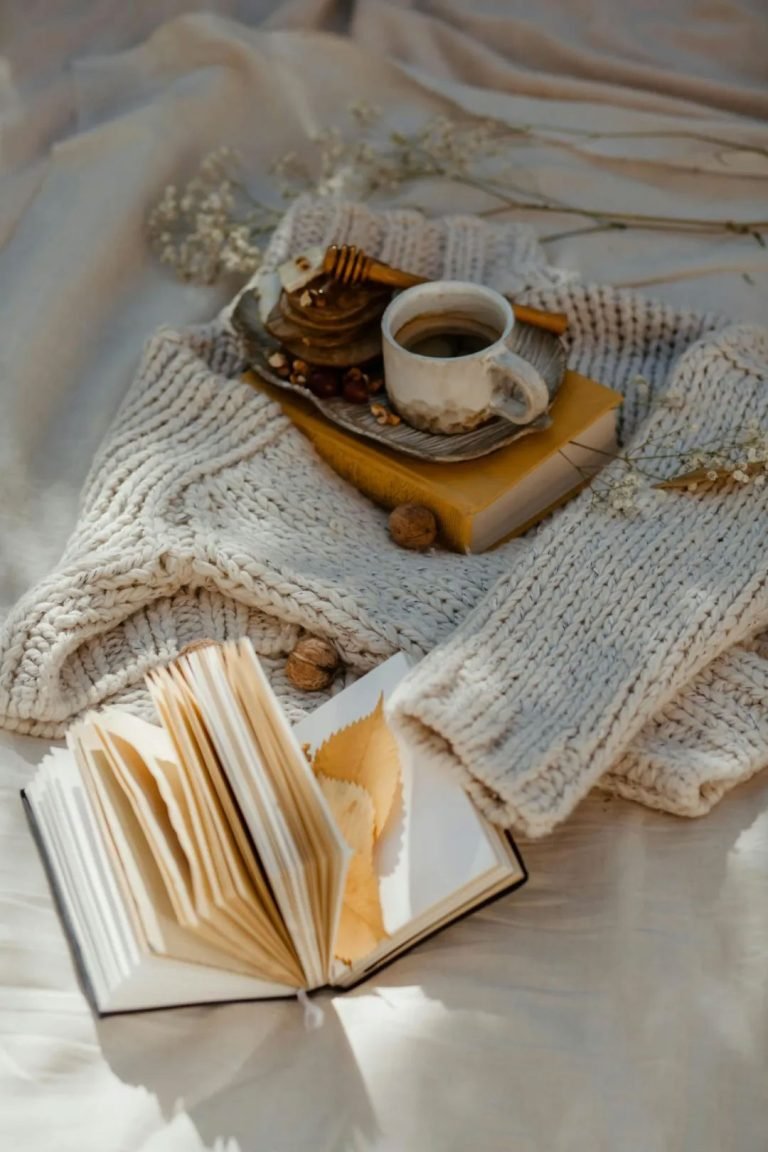Fleece usually means forming a thick, piled fleece traps air in its fibers through napping, brushing, or sanding physical or chemical crafts. This fleece traps air can catch the air between the human body and the outer layer to form a static air layer that can effectively block heat loss to maintain warmth. At the same time. Fleece texture can bring a very soft, cozy touch. Here, we, Aungwinter, a professional custom manufacturer of winter hats and accessories since 1998, will introduce the common fleece fabrics in fall and winter.
1. Natural & Blended Fleece

This type of fleece is commonly crafted from natural fabrics, which are skin-friendly and breathable, with a sense of high texture.
① Flannel
Usually, the conventional fabric of flannel is wool, and nowadays, flannel is mostly crafted from cotton or cotton-blended fabrics. After brushing the fabric surface, a fine, short, dense fleece can form, covering the fabric texture and making it soft, warm, and breathable. Commonly, the surface of flannel has a blurry texture and is fine to the touch. Because of differences of different fabrics, soft pure cotton fleece is prone to getting wrinkles; blended fleece is more durable, and it’s also easy to keep its shape. That is the reason why flannel is often used to make classic shirts, pajamas, all bedding, and casual pants.
② Corduroy
The main component fabric of corduroy is cotton, and the surface of the textile forms vertical piles (ribbed texture), which looks like a stand of lampwick. Sorted by the course of vertical piles, there are 3 types: pin vertical piles, medium vertical piles, and wide vertical piles. Commonly, corduroy is retro, durable, and warm. The pile is soft and the groove remains rigid, which allows corduroy to be used to make long pants, jackets, shirts, skirts, etc. The piles of elbow and knee are frequently rubbed; as a result, these piles are easy to flatten and rub.
③ Shearling
The true integral whole is composed of both sheepskin and sheep hair (wool, commonly means sheep) into one fabric, namely shearling. Shearling is a fabric that is tanned and processed from sheep hair and sheepskin. In general, there are two sides of Shearling – one side is tidy wool and the other side is sheepskin, which is super warm, luxurious, breathable, and moisture-proof. This is the reason that shearling is so expensive, and shearling is often used to make high-end coats, boots, carpets, and car cushions.
2. Chemical Fleece (Mainly Warm Fabrics)

This type of chemical fleece is mainly made from polyester, nylon, and chemical fibers. Through excellent bionic technology, chemical fleece is very light, warm, and cost-effective.
① Polar Fleece
Mainly, polar fleece is made from polyester. After complex processes like napping, carding, shearing, and brushing, small spherical particles of pile are formed based on knitted cloth, resulting in lightweight, fluffy, bouncy, super warm, and fast-drying materials. Moreover, polar fleece is resistant to pilling, which is a revolutionary fabric for outdoor sports. Perfect for outdoor coats, vests, carpets, and home wear. Also known as an alternative to wool at a low price, highly cost-effective.
② Coral Fleece
Same as polar fleece, coral fleece is also crafted from polyester. The fiber of coral fleece is very fine and low in flexural modulus, which can make coral fleece have a coral-like clustered morphology. Therefore, coral fleece is fine, soft to the touch, high in density, and great at water absorption, which is perfect for making carpets, pajamas, and home wear, and carpets. Some coral fleece products are prone to static electricity and pilling. So when choosing coral fleece products, please choose better quality.
③ Sherpa/Lamb Fleece
Sherpa, also called lamb fleece, is made from polyester. Sherpa imitates the curve and fluffiness of cashmere. Thereby, Sherpa is smooth on one side and has curly, fluffy fleece on the other side. Therefore, Sherpa is thick, soft, and super warm, and the outer appearance looks like teddy bears. Often used for coat linings, jackets, carpets, etc. Please note that Sherpa is not a genius wool, and it’s a chemical fabric with a customer-friendly price.
④ Dralon
Dralon is a brand of high-end acrylic fiber, developed by Bayer in Germany. Adopting a dry spinning solution, the fiber cross-section exhibits a non-uniform shape that can store more static air, which is very soft, skin-friendly, breathable, and not prone to pilling, with a nice luster. Dralon is often used for making high-end thermal underwear, inner leggings, and home wear. Please note that Dralon is its brand name, which means high-quality acrylic fabric. Not all acrylic fabrics are called Dralon.
⑤ Milk Fleece
Milk fleece is a fabric that blends milk protein fiber with nylon. Milk protein fibers are produced by dehydrating and defatting liquid milk through a wet spinning process, then blending with other fibers. In addition, milk fleece contains amino acids, and it’s also skin-friendly, smooth, breathable, and warm, with an anti-bacterial function. The touch seems like real silk fabric, which is often used for high-end home wear, baby care products, and bedding.
3. Luxurious Fleece

Luxurious fleece pays more attention to its appearance and high-end touch, which is often used in fashion shows and home ornaments.
① Velvet / Pan Velvet
The conventional composed fabric of velvet is silk; nowadays, the main fabrics used for velvet are cotton, viscose, and polyester. Using fleece cutters to cut the pile warp yarns on the fabric, creating upright, dense, and even piles. Moreover, velvet is smooth to the touch and luxurious in luster, with a strong sense of dropping, which is super luxurious. Often used for gowns, Cheongsam, certain sofa covers, and high-end home wear. Please note that reversed piles, looking from different sights, are different.
② Suede
Originally, suede meant the velvety underside of sheepskin or deer skin, but nowadays, most suede is made from chemical fabrics (microfibers), called artificial suede. After these processes, woven, dying, brushing, and shaping, super micro fabrics can imitate the real suede texture, which is soft to the touch, high texture, and gentle in color, with a slightly astringent. Therefore, artificial suede is often used for coats, skirts, handbags, shoes, home decoration, etc. Please note that artificial suede is not easy to care for, and it’s prone to getting dust and oil, which need a special brush to clean.
4. Special Three-dimensional Fleece

① Chenille
Mainly made from cotton, nylon, and viscose, Chenille yarns look like caterpillars, formed by twisting short fiber bundles between two core threads, creating a fluffy, tufted three-dimensional effect on the fabric surface. Chenille is plump and super soft to the touch, with an uneven texture, which is similar to the blended fabric of velvet and corduroy. Therefore, chenille is often used for making thick sweaters, sofa covers, curtains, and carpets. Please note that chenille is poor at wear resistance, so please avoid strong friction.
① Fleece
Fleece is a general term that refers to all fabrics are produced napping and brushing. Coral fleece, polar fleece, and cashmere belong to napping fabrics. When merchandises are only marked with fleece, which means the most common fleece.
In the End
Fleece makes fall and winter warm to weave the soft armor. When the fall winds blow the last leaf away. These warm fleece fabrics become the courier of the fall and winter seasons. Natural fleece seals cotton and wool with its fine fleece. Chemical polar fleece gives outdoor adventurers the courage to explore with its lightweight and fluffy properties. The lustering of velvet and textured chenille makes each styling an art of walking. From morning pajamas to commute coats, from carpets to street coats, fleece is wrapping fragmented warmth in daily life, which hides the vintage texture (like ribbed corduroy) and is also full of modern ingenious craft (like Dralon fabrics).
In this autumn and winter, there is no need to chase fashion trends. Only need to choose your favorite fleece.





